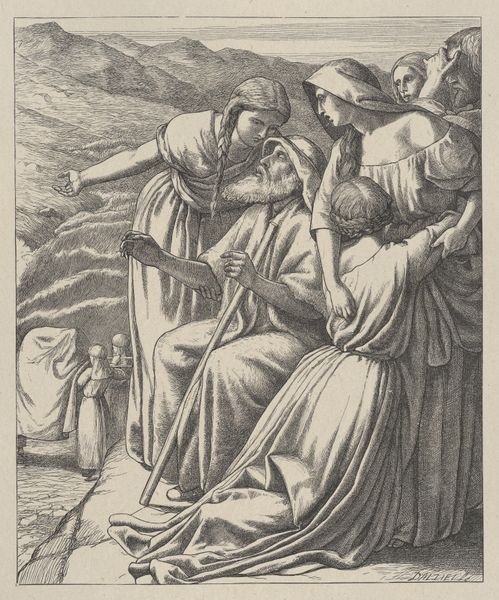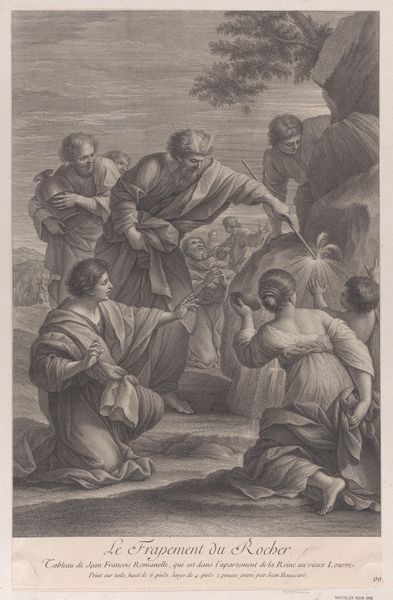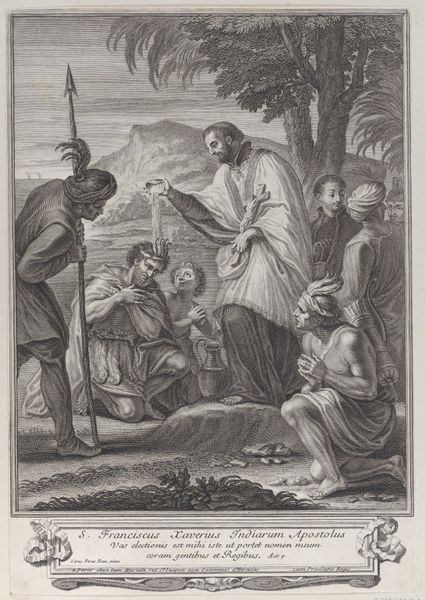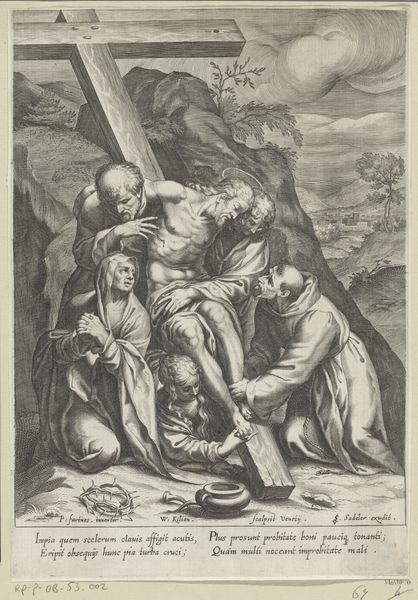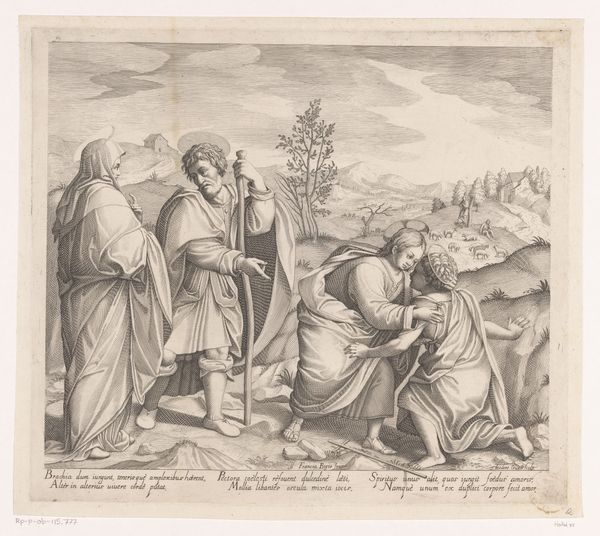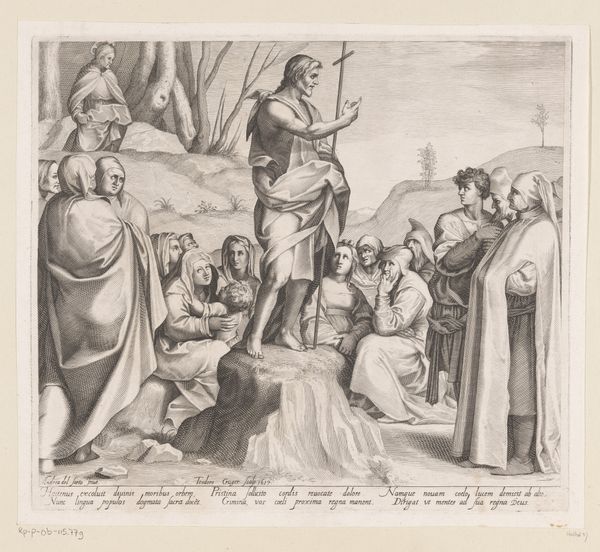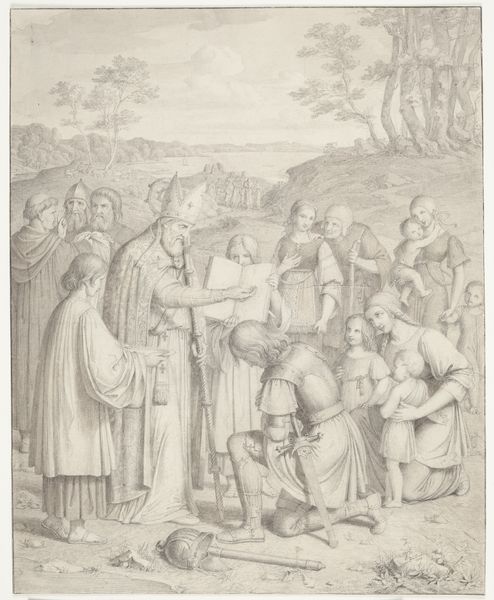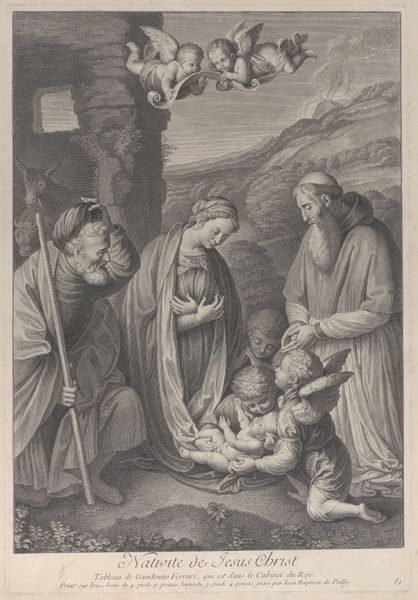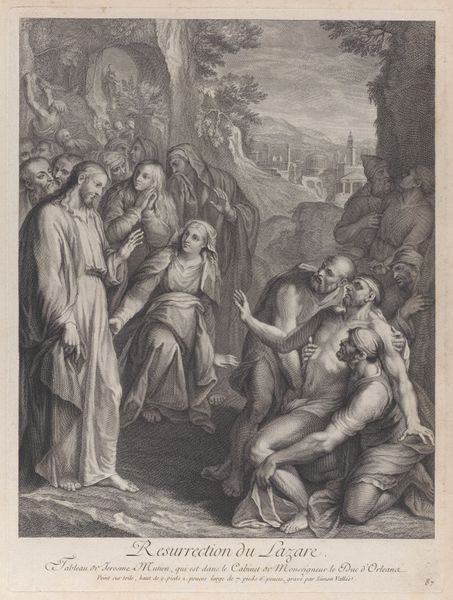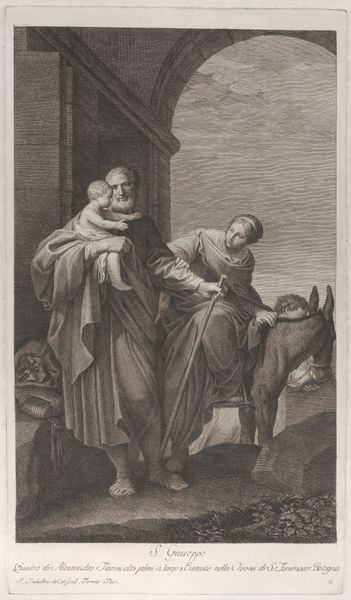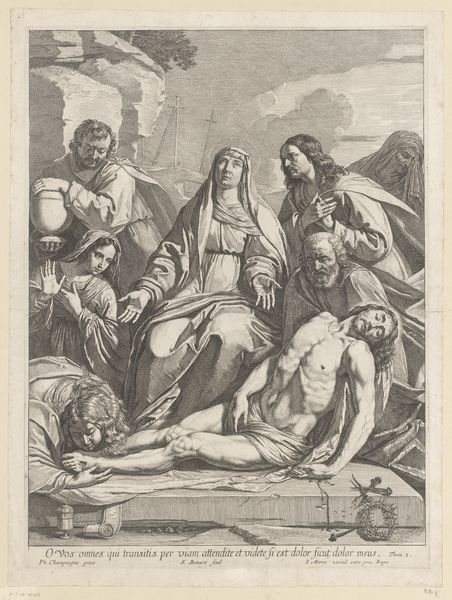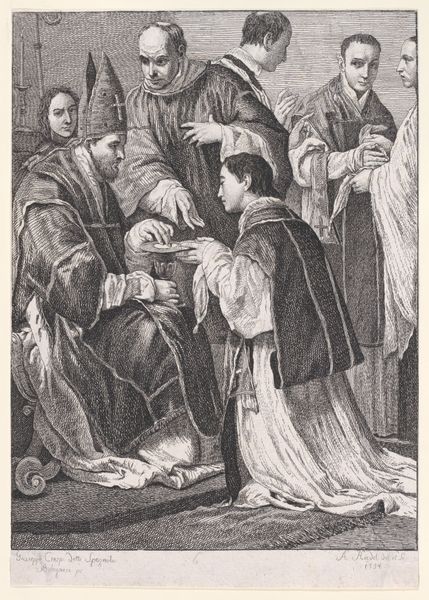
print, engraving
#
narrative-art
# print
#
figuration
#
romanticism
#
history-painting
#
academic-art
#
engraving
Dimensions: height 401 mm, width 360 mm
Copyright: Rijks Museum: Open Domain
Curator: This somber print, titled "Martyrdom of Saint Ewald," was created by Johann Nepomuk Strixner in 1828, employing the detailed technique of engraving. Editor: My initial reaction is one of dread; the stark contrasts heighten the brutality of the scene. It’s raw. The focus feels very human in its agony and despair. Curator: It certainly conveys that. Examining the work's production, Strixner's choice of engraving highlights the narrative of martyrdom. The process demands precision, multiple stages of incising the image onto the plate, inking, and finally, pressing the print. This meticulous method emphasizes the enduring impact of this religious history. Editor: The piece invites a crucial dialogue between historical narratives and power dynamics. Consider how the calm authority figure is watching these brutal acts unfold – situates the work within an examination of complicity, a look into the normalization of violence sanctioned by the powerful within religious narratives and wider societal structures. How do we reconcile the violence depicted here with the narrative of spiritual guidance that he's meant to represent? Curator: Indeed, and the materiality contributes too. Prints, being reproducible, facilitated wider dissemination of such stories. It begs us to think of the market for such art and the society who wanted such material in their homes. Editor: It really urges us to unpack the layers of history, gender, race and class. The vulnerable figure, a counterpoint to power…whose bodies throughout history bear the burden of ideological conflict? The very visibility that printmaking enables becomes both a tool for spreading narratives and a platform to explore our responsibilities as viewers in consuming these depictions. Curator: An incisive point. In closing, reflecting on Strixner's work allows us to reconsider art making as a potent force deeply intertwined with how narratives get solidified. Editor: Yes, and more than a historical snapshot; it challenges our modern understandings of power, victimhood, and accountability when interpreting historical works of art.
Comments
No comments
Be the first to comment and join the conversation on the ultimate creative platform.
